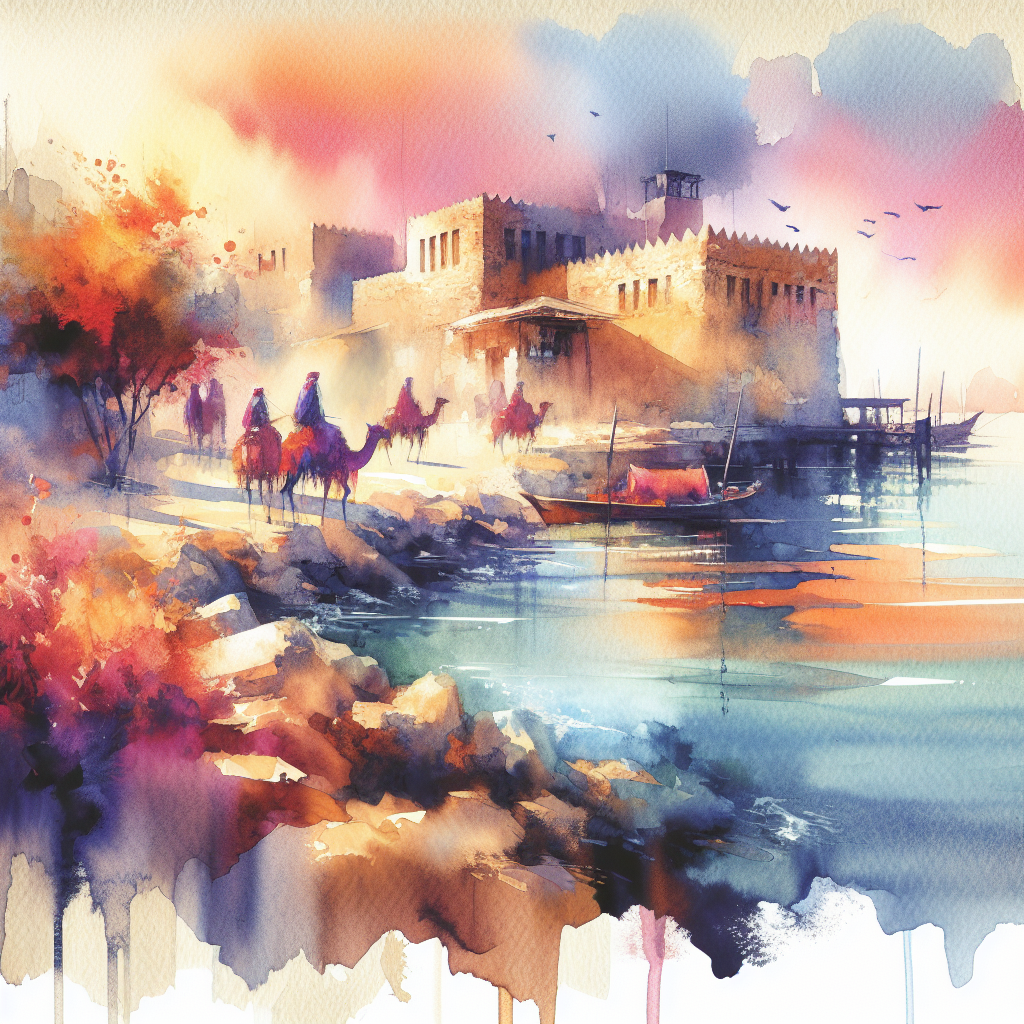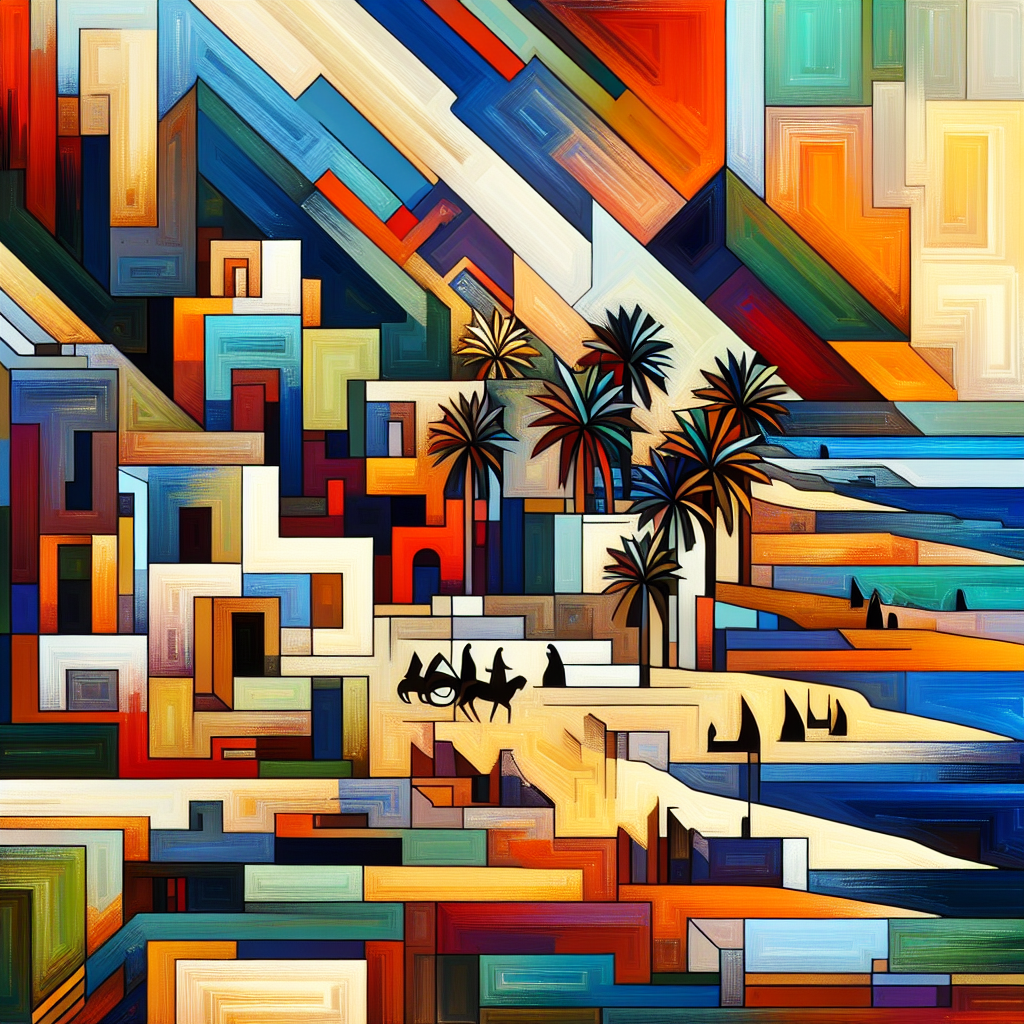Failaka Island, located in the Persian Gulf to the east of Kuwait City, provides a rich historical tapestry that reveals shifts in human civilization spanning over thousands of years. The numerous archaeological sites peppered throughout the island are treasure troves that divulge valuable insights into ancient societies and their cultures. These sites, filled with ancient seals, fragments of pottery, and robust architectural structures are vivid testaments to the footprint of diverse cultures that once thrived in this region.
II. Historical Importance of Failaka Island
The central position of Failaka Island on ancient maritime trade routes boosted its strategic importance, drawing various civilizations to its shores. Classical Greek historians, like Arrian and Pliny, mentioned the island in their works, testament to the significant role it held during their times. The island’s broad history of occupation further enhances its prominence – from the Bronze Age Dilmun civilization to the Hellenistic period under the reign of Alexander the Great, and subsequently the Islamic era. As a pivotal junction of cultures and civilizations, Failaka Island’s historical relevance is undeniable and continues to be an intriguing focal point for researchers and historians.

Archaeological Exploration in Failaka Island
The archaeological exploration of Failaka Island can be traced back to the first mission embarked upon by a Danish team in the 1950s. Their pioneering expedition opened the gates to more extensive scientific research and discovery in the subsequent decades. The island, being a melting pot of civilizations, necessitated the implementation of a plethora of excavation methods. These included traditional shovel tests to painstakingly unearth artifacts and relics buried under the layers of time, to state-of-the-art remote sensing techniques employed to survey and map the vast archaeological landscapes below the surface.
Over the years, teams of archaeologists from around the globe have braved the harsh weather conditions of the island, their perseverance fueled by the tantalizing prospects of unearthing new insights into ancient civilisations. Heat, dust, and unexpected sandstorms were just a few of the difficulties encountered. These challenges did not deter their spirited endeavors, but instead, fortified the resolve to unearth the treasures of the past, promising to shed light on the mysteries of human history and evolution.
Due to these exhaustive efforts, invaluable archaeological artifacts have been brought to light, each adding a fresh perspective to our understanding of the unique cultural confluence that is Failaka Island. From the remnants of ancient settlements that provide clues about the lifestyle, housing and economic conditions of ancient civilizations, to the discovery of intricate seals and pottery that tell tales of trade, artistry and craftsmanship, every find contributes to our ever-expanding knowledge of human heritage.

Persian Gulf Archaeology
The region surrounding Failaka Island has a profound impact on its historic and archaeological importance. Bordered by the Persian Gulf, the Island’s strategic position was integral to the exploration and colonization efforts of diverse civilizations. With its fertile land coupled with abundant marine resources, Failaka Island offered a promising haven for ancient settlements, encouraging cultural fusion and economic trade.
Its proximity to the civilizations of Mesopotamia and Indus Valley meant that Failaka was at the crossroads of some of the most ancient cultures in human history. This position facilitated a steady flow of cultural and trade exchanges with these regions. The yield of artifacts from excavations, imprinted with Mesopotamian, Persian, and Indus Valley symbolism, reinforces this connection.
The island’s easy accessibility from both land and sea provided a strategic advantage during the historical periods of maritime domination and terrestrial expansion. The expansive coastal line of the island offered an optimal point of entry and exit for sea voyagers and traders, while the flat terrain made it convenient for civilizations looking to extend their territorial influence.

The climatic conditions of this region, characterized by harsh summers and mild winters, played a significant role in shaping the lifestyle of its inhabitants. This climatic influence can be seen in the remains of architectural structures found on the island, which reflect a meticulous design to ensure optimal thermal comfort.
Failaka Island’s location thus situates it at the heart of a vibrant regional nexus revolving around a vast ocean and a landmass stretching across several cultures and civilizations. This strategic position has over time witnessed a mosaic of cultural influences, economic interactions, and historical links, making it a melting pot of global heritage.

Crucial Archaeological Findings in Failaka Island
Among the significant findings in Failaka Island are structures reminiscent of the Dilmun civilization, the earliest known culture in the Persian Gulf. Monuments such as sacred wells and intricate seals point towards this civilization’s propensity for trade and sea-faring. Particularly striking is the discovery of a seal portraying a sea-going vessel, affirming Failaka Island’s role in maritime navigation in ancient times.
The remnants of the Hellenistic influence are abundant, be it in the form of large fortress-like structures or elaborately designed pillars reflective of Greek architectural styles. The unearthing of an ancient Greek temple, named after the Greek god Apollo, signifies Hellenistic religious practices.
Last but not least, Islamic-era artifacts found on the island indicate a transition in religious and administrative control. Stellar examples include an early mosque dating back to the ninth century and intricate Islamic pottery that features distinct Arabic inscriptions. These evidences portray the island’s robust integration into the larger Islamic world during the medieval period.
Conclusion
As we recap the crucial archaeological findings in Failaka Island, the importance of this island in the broader context of Gulf archaeology cannot be understated. Findings from the island range from Dilmun seals and the Greek temple to remains from the Islamic era, all of which serve as tangible evidence of the island’s historical and cultural richness. Clearly, the island provides a window into the intermingling of varied cultures and civilizations and their evolution across several millennia.
Every pottery shard, seal, or architectural structure unearthed leads us a step further in piecing together the puzzle of human evolution. Consequently, it underscores the need for continued exploration of Failaka Island, focused not just on uncovering new artifacts but also on ensuring their preservation for future generations. In an era where historical artifacts are increasingly endangered by factors such as climate change, looting, and urbanization, archaeological preservation is a pressing concern.
Failaka Island, with its rich deposits of human heritage, therefore, stands as a testament to the necessity and value of archaeological exploration and preservation. Its archaeological legacy holds the keys to unlocking further chapters in human history, making it an invaluable asset for the Gulf region and indeed, the world.
